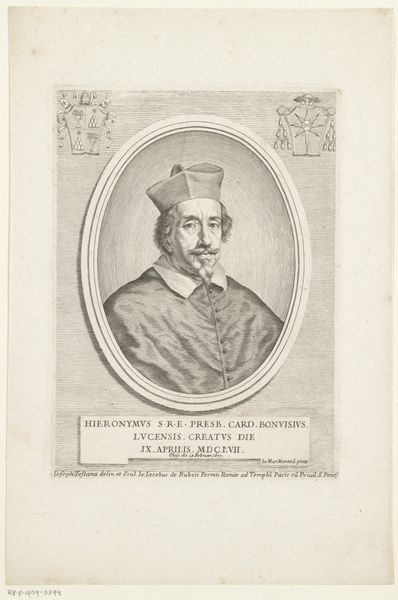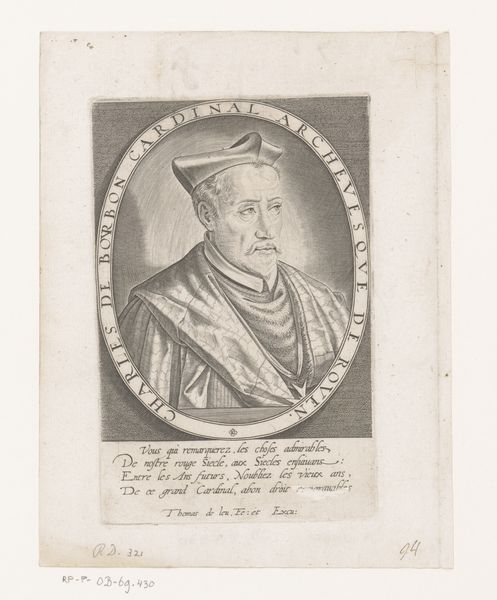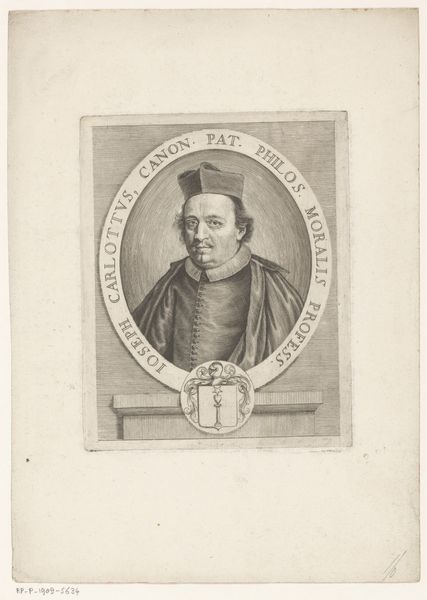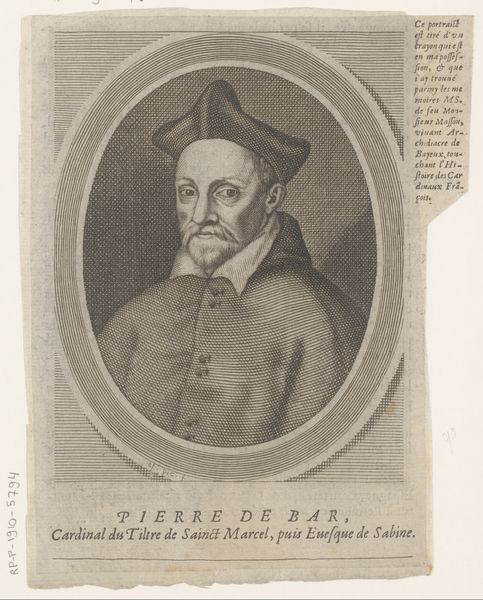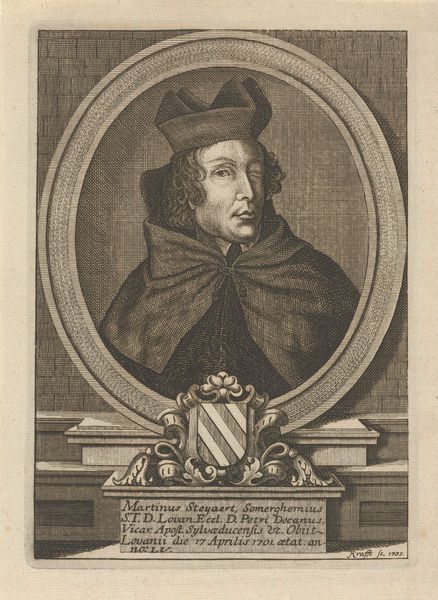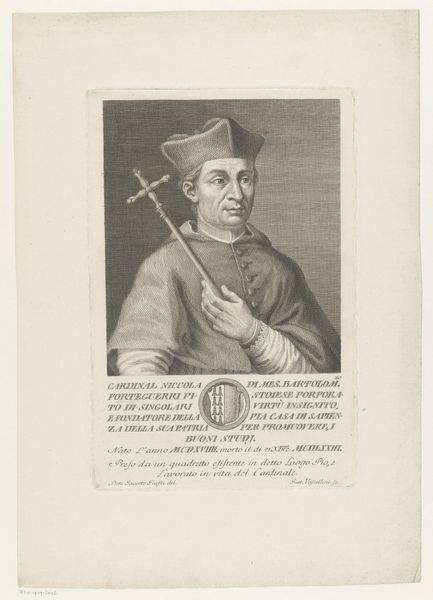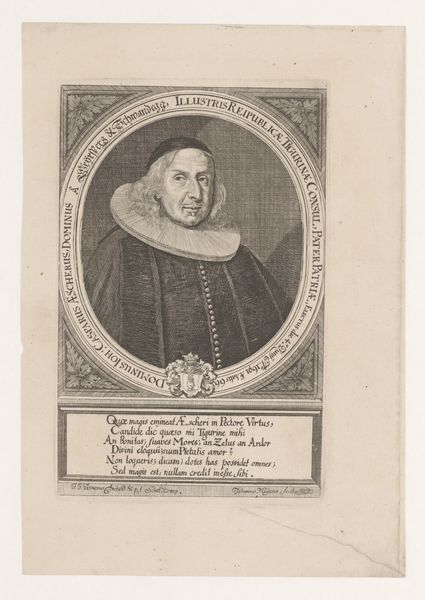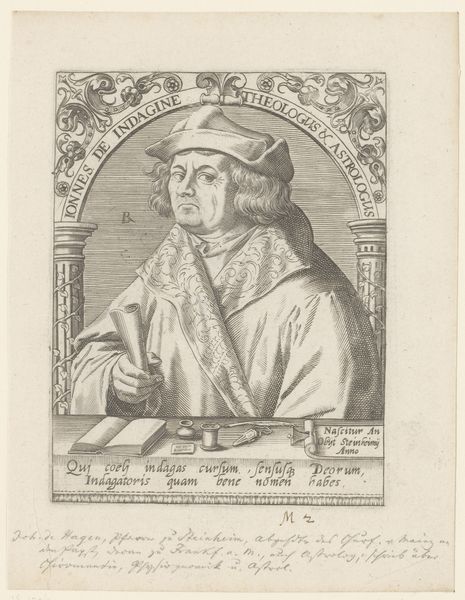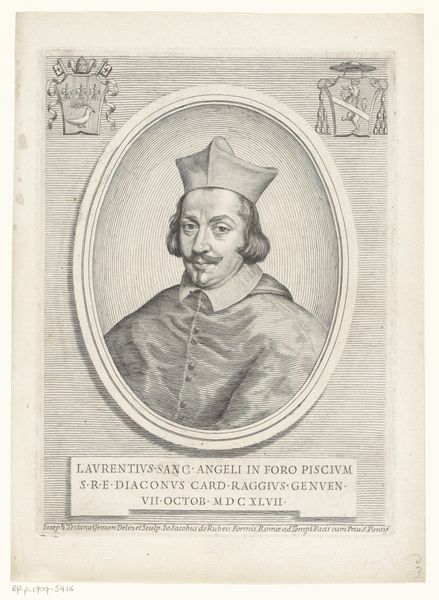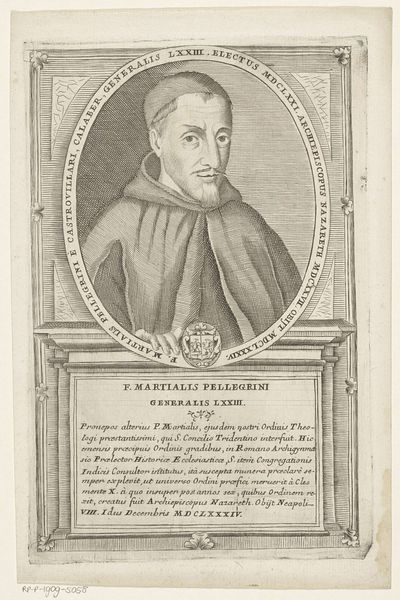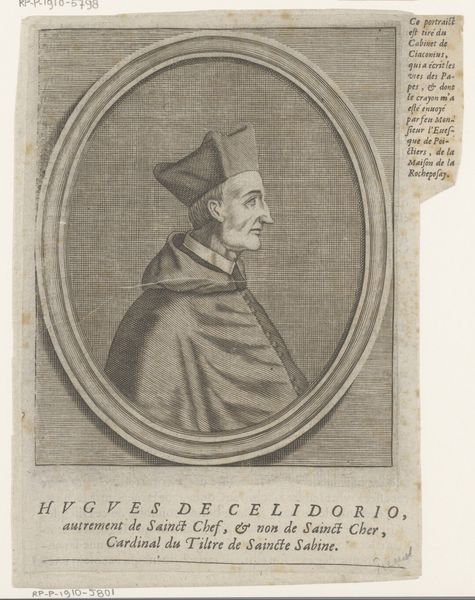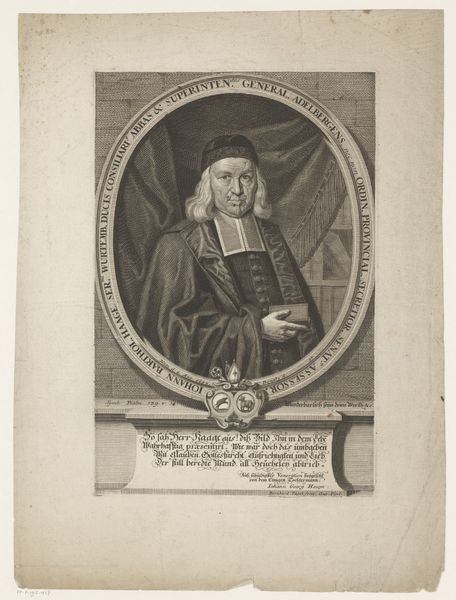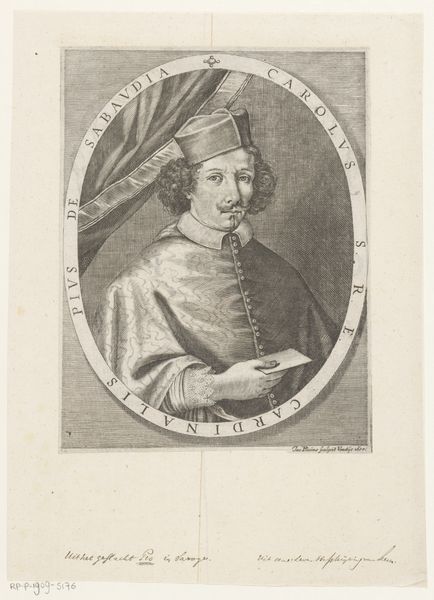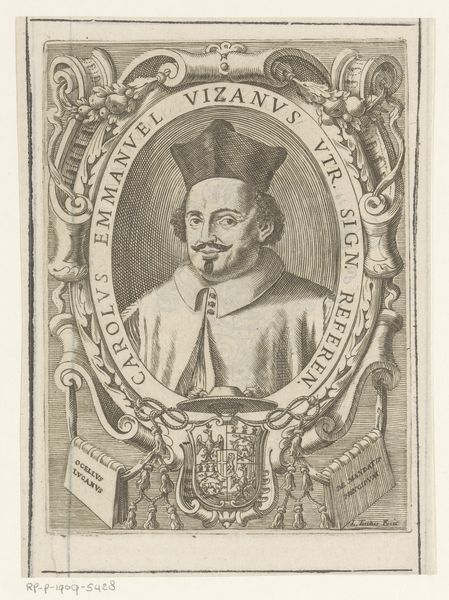
engraving
#
portrait
#
baroque
#
old engraving style
#
19th century
#
history-painting
#
academic-art
#
engraving
Dimensions: height 174 mm, width 141 mm
Copyright: Rijks Museum: Open Domain
Curator: This engraving captures the likeness of Arnaud d'Aux, a prominent religious figure who lived during a turbulent period. It was crafted in 1660 by Etienne Picart. The artwork immortalizes d'Aux, a bishop and cardinal, offering us a glimpse into the visual culture of the 17th century. Editor: My first impression is one of contained power. The oval frame almost seems to struggle to hold the presence of the man within. There's something about his gaze, direct but also knowing, that speaks of inner authority. Curator: That sense of authority is definitely intentional. Portraits like these were often commissioned to project an image of strength and legitimacy, particularly for figures holding positions of power within the church. Consider the baroque period's affinity for drama and splendor reflected even in what seems a rather simple engraving. Editor: Absolutely. His robes, while not overtly opulent, denote a certain elevated status. But it's also in the detail – look at the buttons on his cassock, each one precisely rendered. I wonder what emotional resonances this image carried for those who knew d'Aux. What stories might they have woven around this likeness? Curator: The inscription surrounding the portrait adds another layer. These weren't just images, but objects laden with texts meant to persuade. Such framing elements reinforce the official and public role of these images in 17th century France. Editor: That is true. What about the artist? I wonder what visual cues he embedded within the engraving itself that could further deepen our interpretation. Are there specific patterns or subtle visual devices that signal underlying symbolic significance, or is it just meant to accurately portray the subject and his status? Curator: It's definitely not a photographic approach to accuracy. It's about curating a message, crafting an impression for posterity, something that serves institutional memory more than any sense of human authenticity we might seek today. The print was copied from another plate. Editor: That resonates deeply for me; these aren't innocent depictions. Images like this helped shape and cement narratives of authority and the very culture and structures that supported it. So much more than just art history, this image captures human and cultural memory, inviting speculation and debate about the nature of authority and how those claims perpetuate over time.
Comments
No comments
Be the first to comment and join the conversation on the ultimate creative platform.
